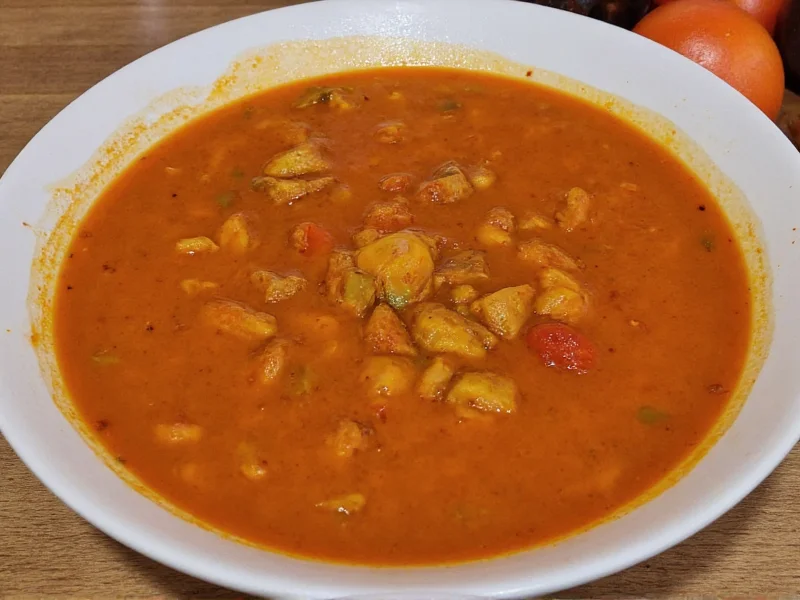Understanding Stew Seasoning Fundamentals
Stew seasoning serves as the flavor backbone for hearty, slow-cooked dishes, transforming simple ingredients into deeply satisfying meals. Unlike generic seasoning blends, proper stew seasoning balances earthy, savory, and aromatic elements specifically formulated to withstand long cooking times without losing potency. The most effective blends contain ingredients that bloom and meld their flavors gradually as the stew simmers, creating that signature rich, rounded taste characteristic of well-made stews.
When evaluating what is good stew seasoning, consider how each component contributes to the final flavor profile. Traditional stew seasoning typically includes:
- Base aromatics: Onion powder, garlic powder, celery seed
- Core herbs: Thyme, rosemary, oregano, marjoram
- Umami enhancers: Paprika (sweet or smoked), tomato powder
- Subtle heat: Black pepper, cayenne (used sparingly)
- Flavor balancers: Salt, sometimes a touch of sugar
Homemade vs. Commercial Stew Seasoning Options
Creating your own homemade stew seasoning blend offers significant advantages over store-bought alternatives. When you make your own, you control the quality of ingredients, avoid unnecessary additives, and can tailor the blend to your specific taste preferences and dietary needs. Most commercial stew seasonings contain fillers like maltodextrin, anti-caking agents, and excessive sodium that compromise both flavor and nutritional value.
| Characteristic | Homemade Stew Seasoning | Commercial Stew Seasoning |
|---|---|---|
| Ingredient Quality | Fresh, whole spices you select | Often older spices, potential fillers |
| Sodium Content | Adjustable to preference | Typically high (400-600mg per serving) |
| Customization | Complete control over flavor profile | Fixed formula, limited variations |
| Cost per Use | Approximately $0.05 per batch | Approximately $0.15-$0.30 per batch |
| Shelf Life | 3-6 months for peak flavor | 12-18 months (flavor degrades over time) |
Perfect Homemade Stew Seasoning Recipe
Creating your own best stew seasoning for beef stew requires attention to ingredient ratios and quality. This versatile blend works equally well for beef, chicken, lamb, or vegetable stews, with minor adjustments for specific proteins. The following recipe makes approximately ¼ cup (enough for 4-6 pounds of meat):
Basic All-Purpose Stew Seasoning Blend
- 2 tablespoons paprika (sweet or smoked)
- 1½ tablespoons dried thyme
- 1 tablespoon garlic powder
- 1 tablespoon onion powder
- 2 teaspoons dried rosemary, finely crushed
- 2 teaspoons dried oregano
- 1½ teaspoons black pepper
- 1 teaspoon celery seed
- ½ teaspoon cayenne pepper (optional)
- 2 teaspoons sea salt (adjust to preference)
Mix all ingredients thoroughly in a small bowl, then store in an airtight container away from light and heat. For optimal flavor, use within 3 months. When preparing to use your homemade stew seasoning, measure carefully—typically 1½ to 2 tablespoons per pound of meat provides ideal seasoning without overwhelming the dish.
Using Stew Seasoning Effectively
Understanding how much stew seasoning per pound of meat to use makes the difference between a perfectly seasoned stew and one that's either bland or overpowering. The general rule is:
- Beef and lamb: 1½-2 tablespoons per pound
- Chicken and turkey: 1-1½ tablespoons per pound
- Vegetable stews: 1-1½ tablespoons per batch
For best results, apply stew seasoning in two stages: first, rub ⅔ of the blend directly onto meat before browning, which creates a flavorful crust and seals in juices. Then, add the remaining ⅓ to the cooking liquid during the simmering phase, allowing the flavors to gradually infuse throughout the cooking process. This two-stage approach maximizes flavor development without creating an uneven seasoning profile.
Common Substitutions and Troubleshooting
When you need a stew seasoning substitute, understanding the flavor components helps you create effective alternatives from pantry staples. If you're wondering what is in commercial stew seasoning to replicate it, focus on these key elements:
- For missing thyme: Use oregano or marjoram (use ⅔ the amount)
- Without rosemary: Increase thyme and add a pinch of sage
- No paprika: Substitute with tomato paste (1 tablespoon per teaspoon)
- Low-sodium option: Double herbs, add lemon zest, use mushroom powder
If your stew turns out too salty—a common issue with commercial blends—add raw potato chunks during the last 30 minutes of cooking to absorb excess salt, or dilute with additional unsalted broth. For bland stews, create a flavor booster by mixing 1 tablespoon of your seasoning blend with 2 tablespoons of tomato paste and cooking it in the stew for 10-15 minutes before serving.
Regional Variations and Specialized Blends
Different culinary traditions have developed distinctive stew seasoning profiles that reflect local ingredients and taste preferences. Understanding these variations helps you select or create the perfect blend for specific dishes:
- French-inspired: Emphasizes thyme, bay leaf, and parsley (bouquet garni style)
- Mediterranean: Features oregano, rosemary, and a touch of citrus zest
- Southwestern: Includes cumin, chili powder, and smoked paprika
- Eastern European: Heavy on paprika, caraway, and dill
- Asian-inspired: Uses star anise, ginger, and five-spice elements
When adapting recipes from different traditions, adjust your stew seasoning accordingly. For example, when making a French beef bourguignon, reduce the paprika and increase the thyme and bay elements. For a hearty Irish stew, emphasize the onion and black pepper components while reducing herbs that don't feature traditionally.











 浙公网安备
33010002000092号
浙公网安备
33010002000092号 浙B2-20120091-4
浙B2-20120091-4